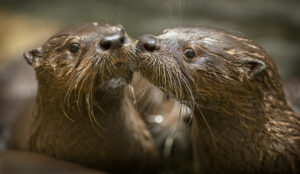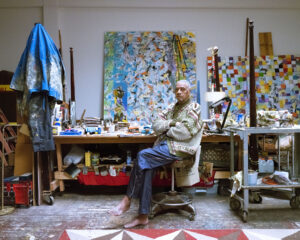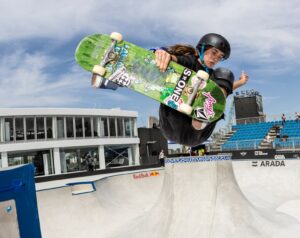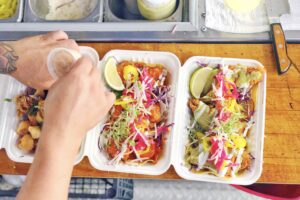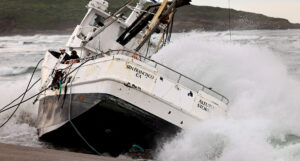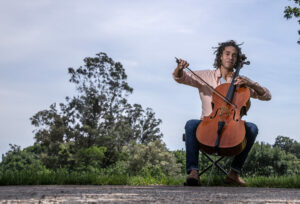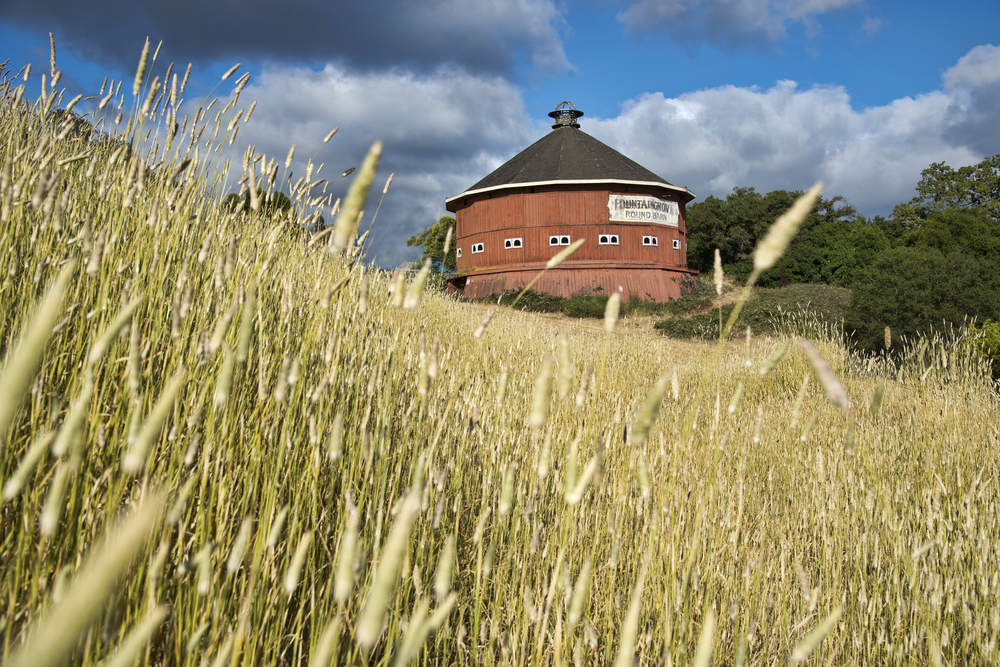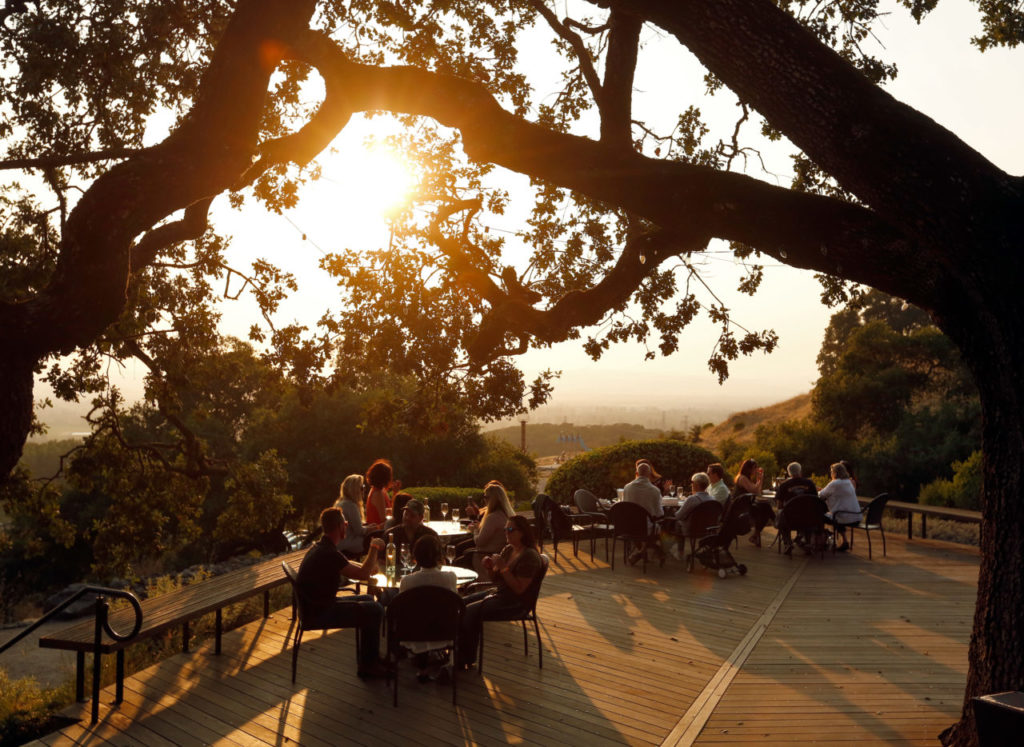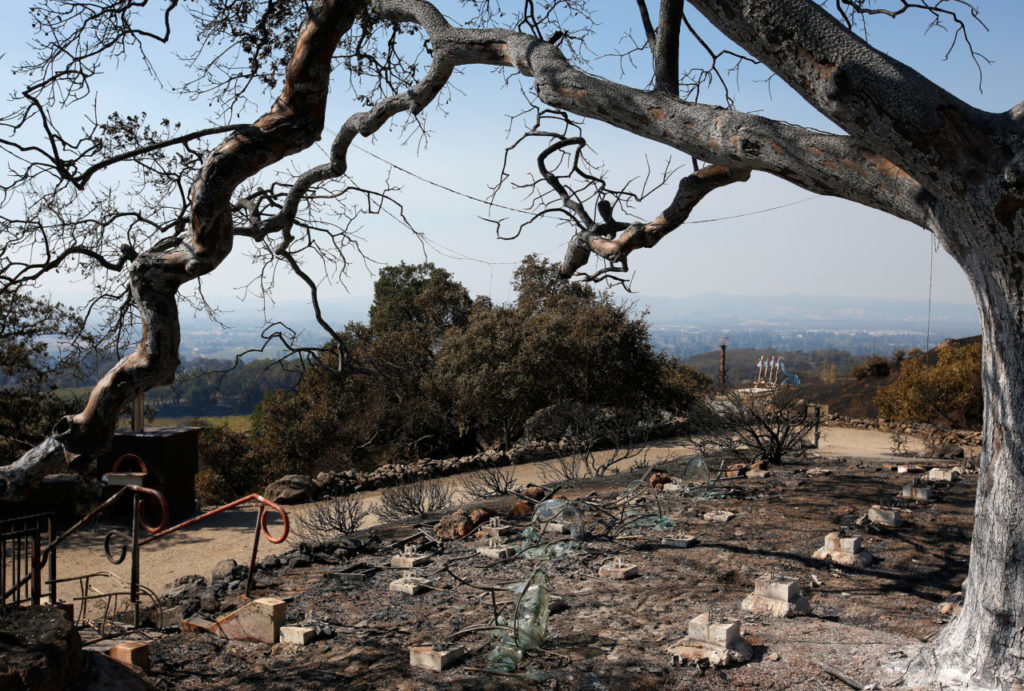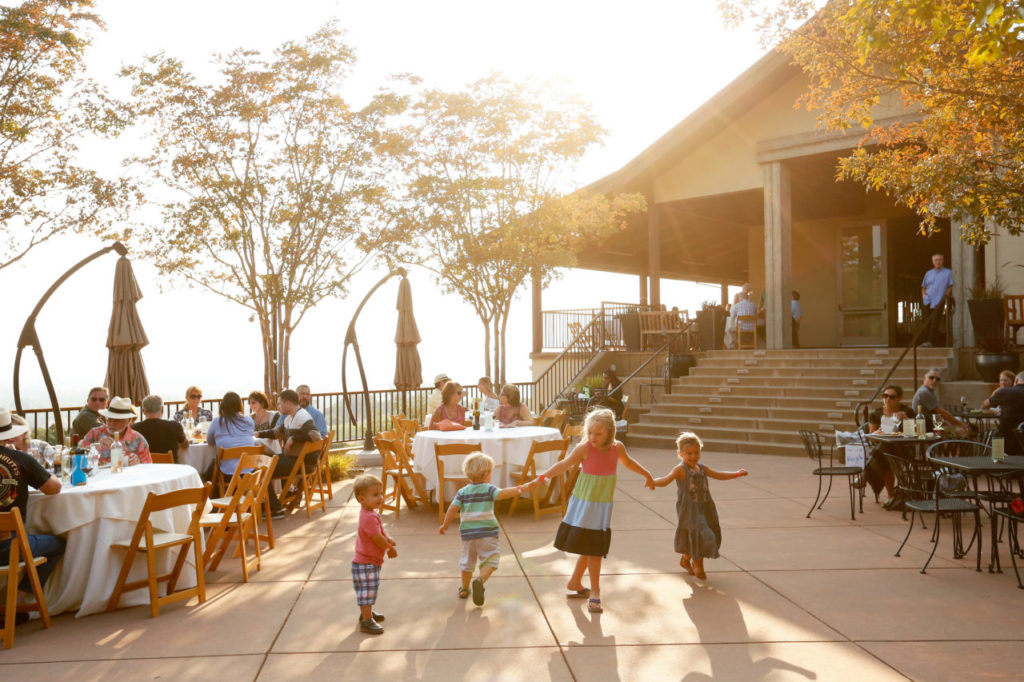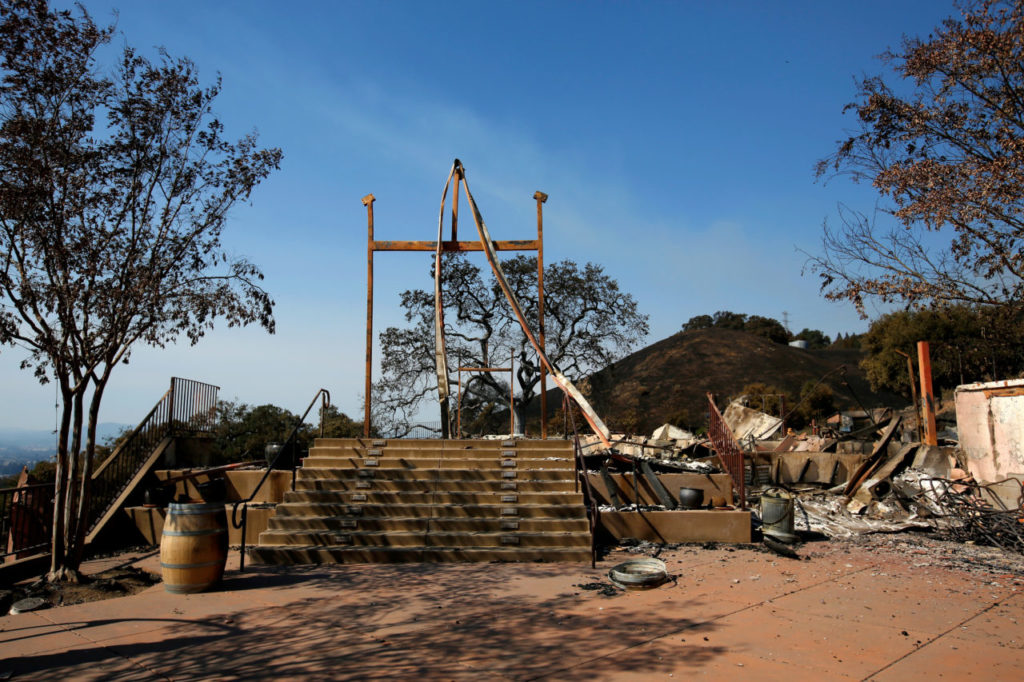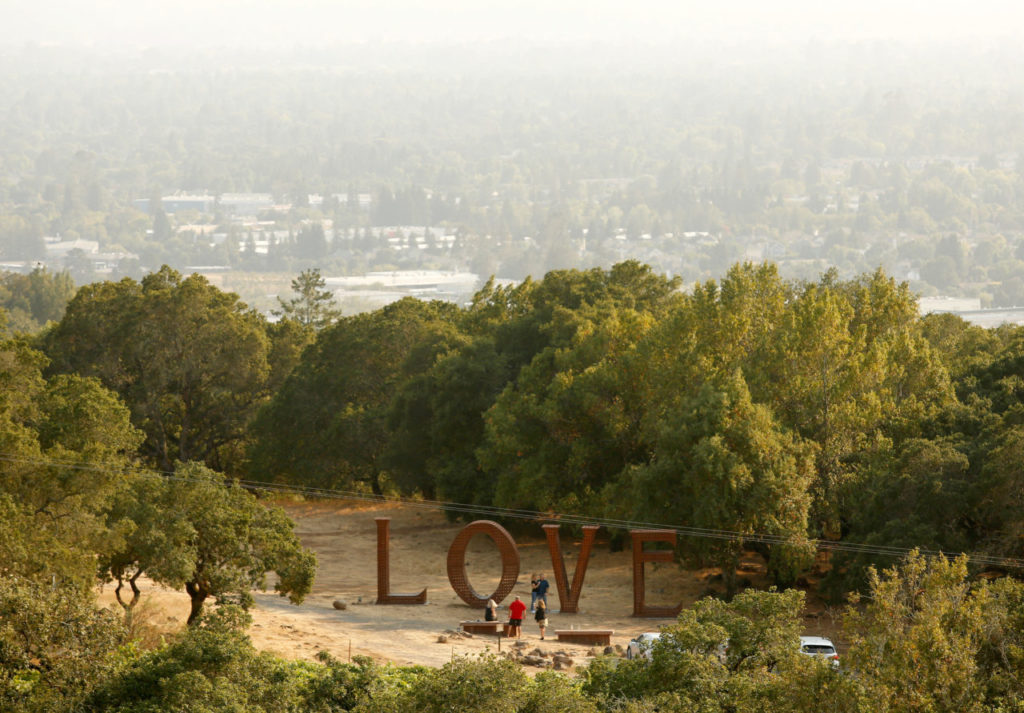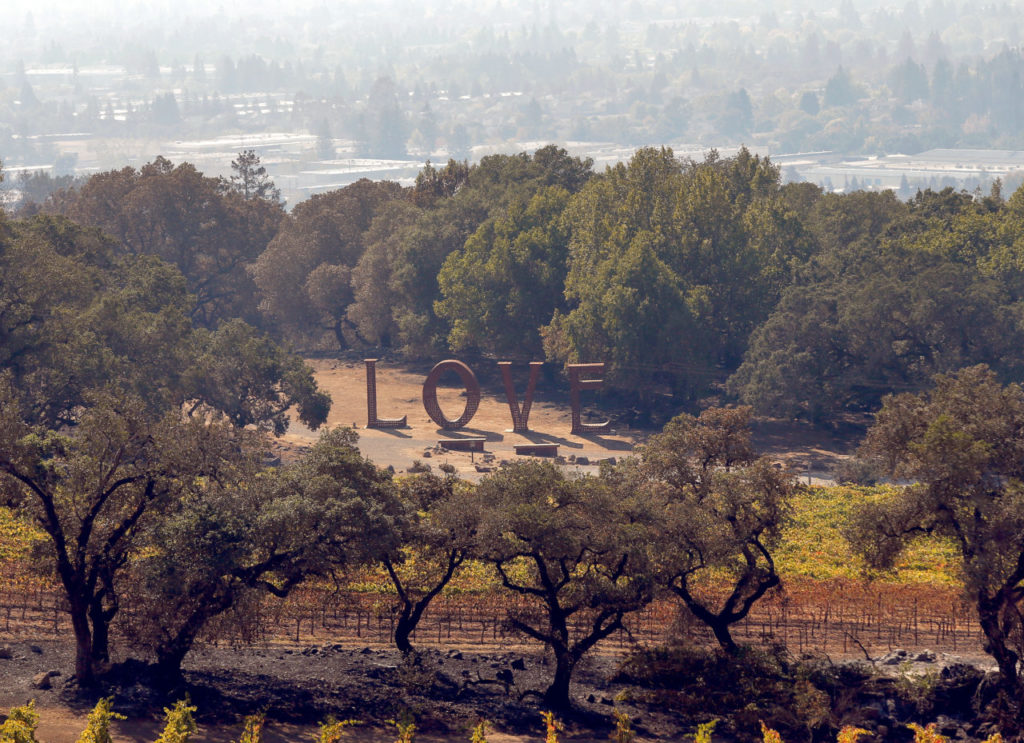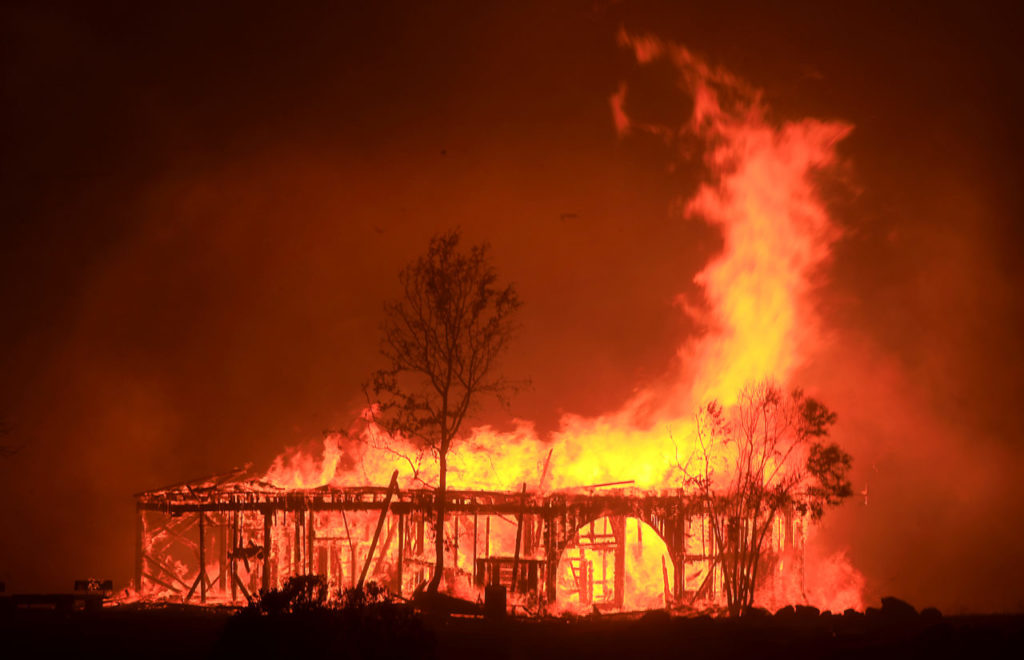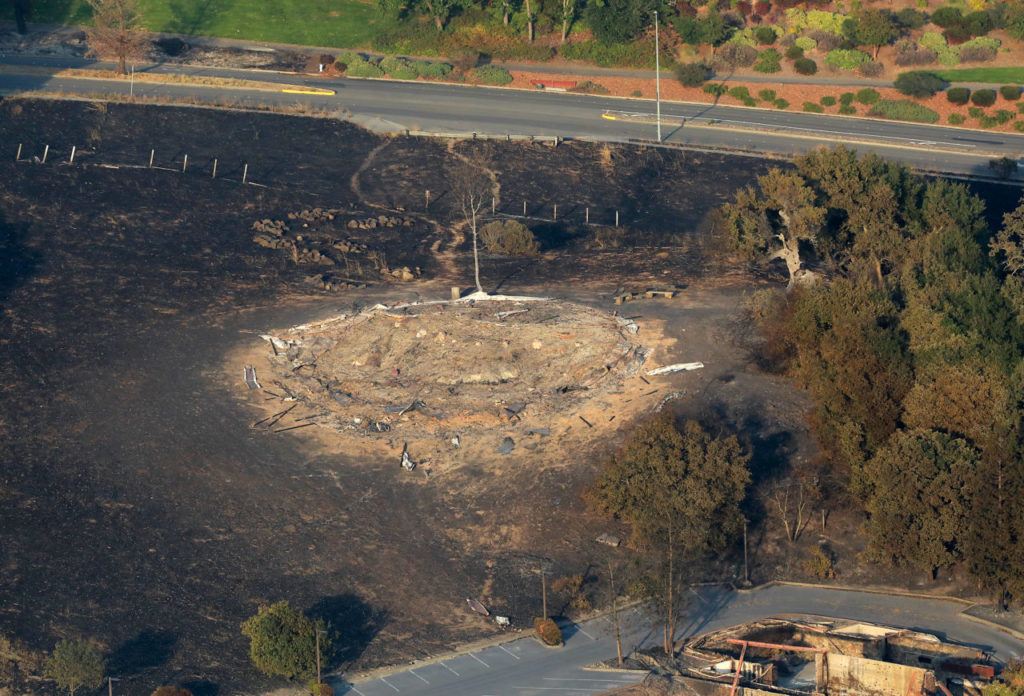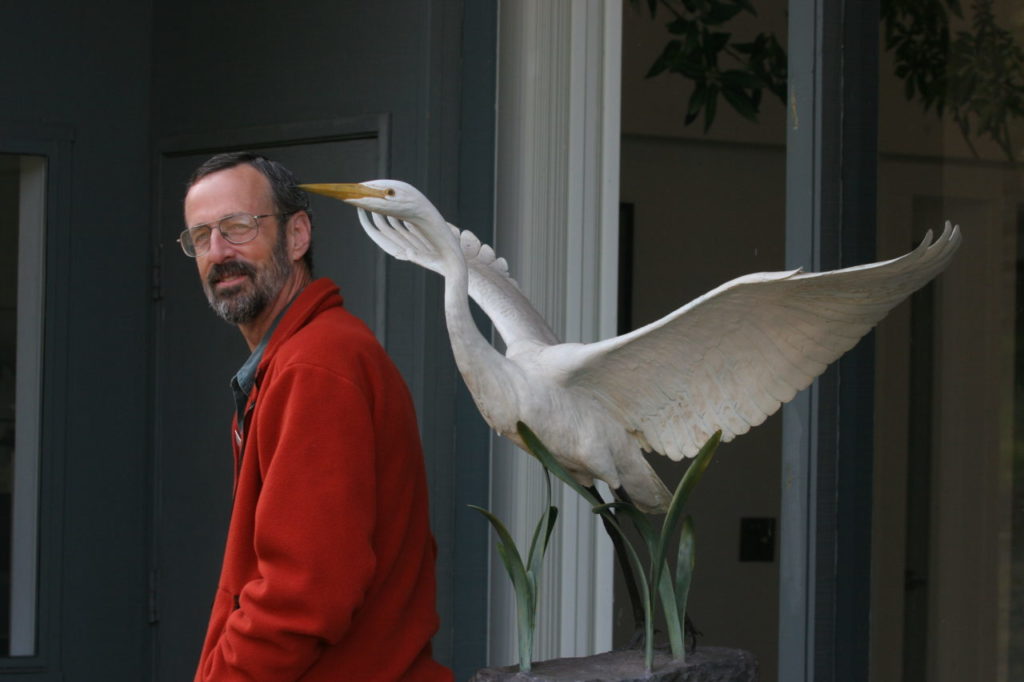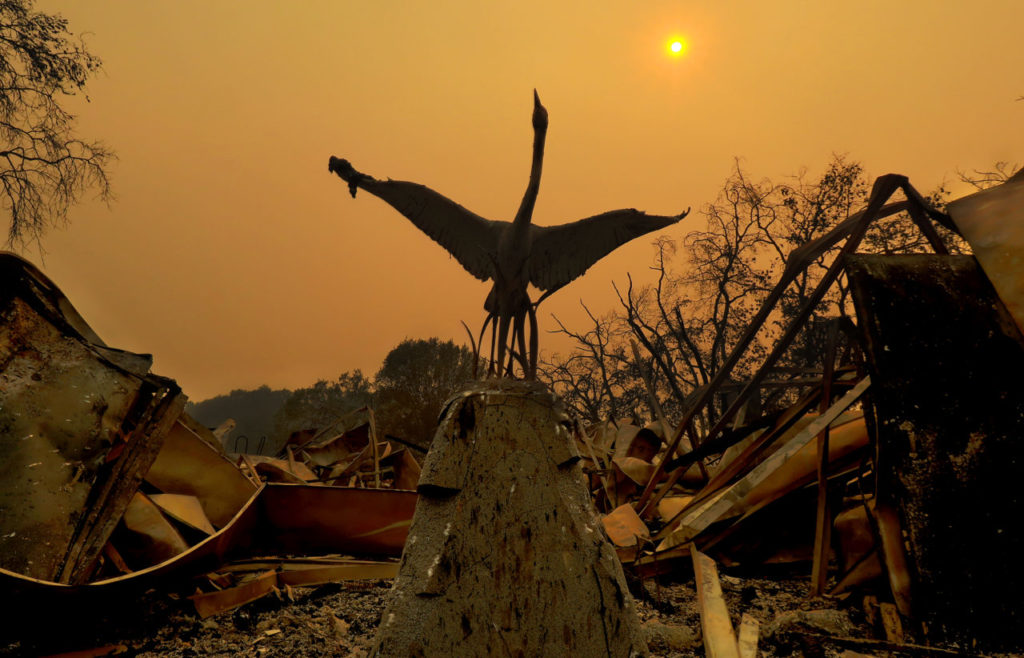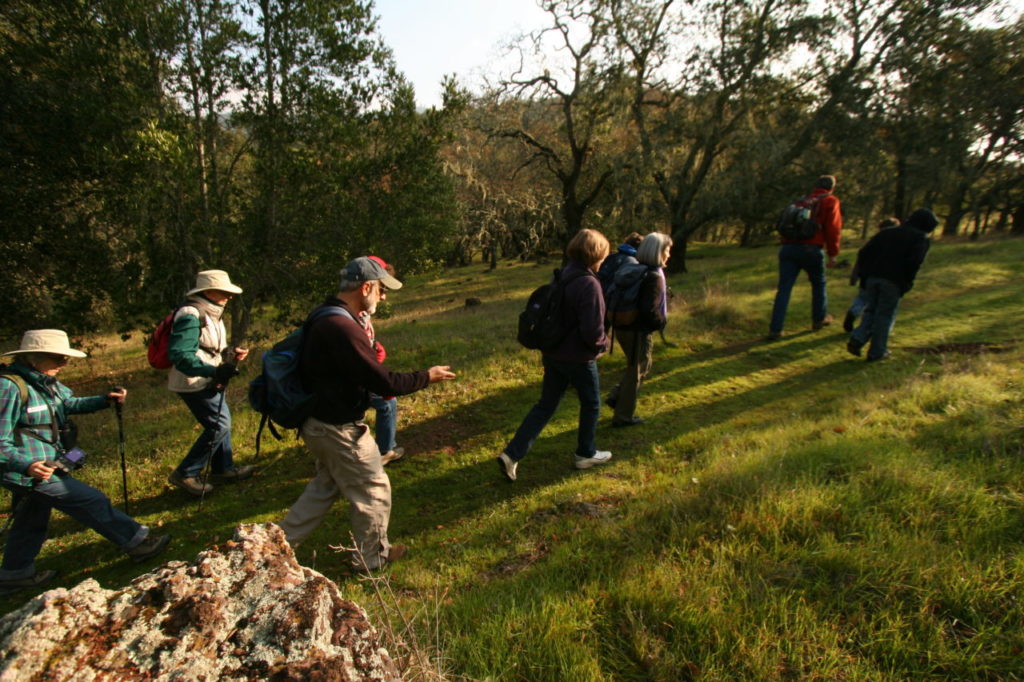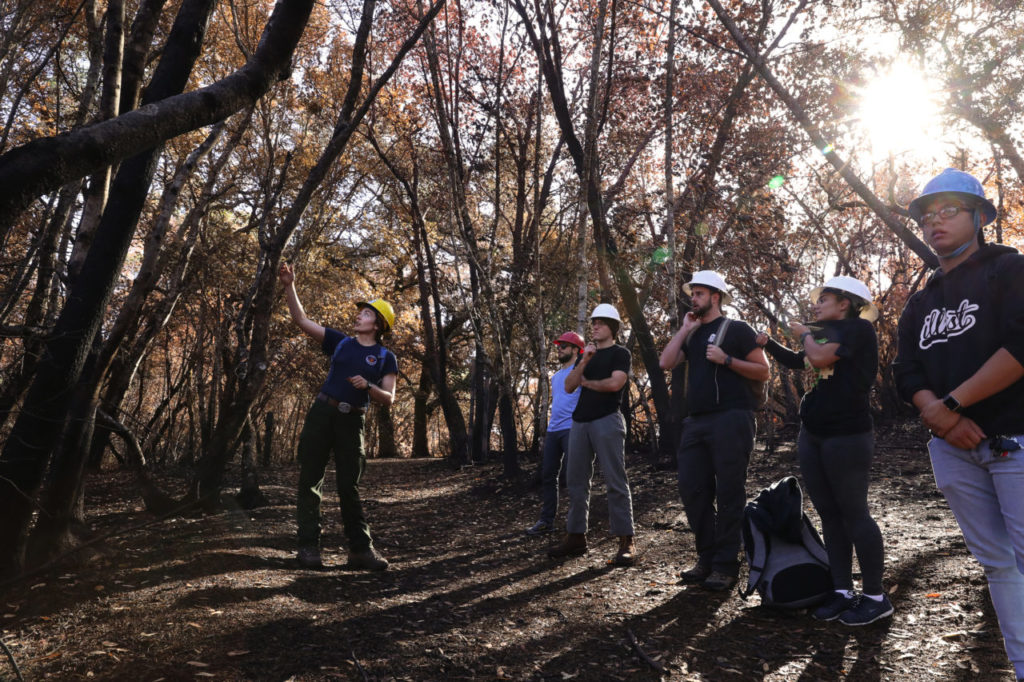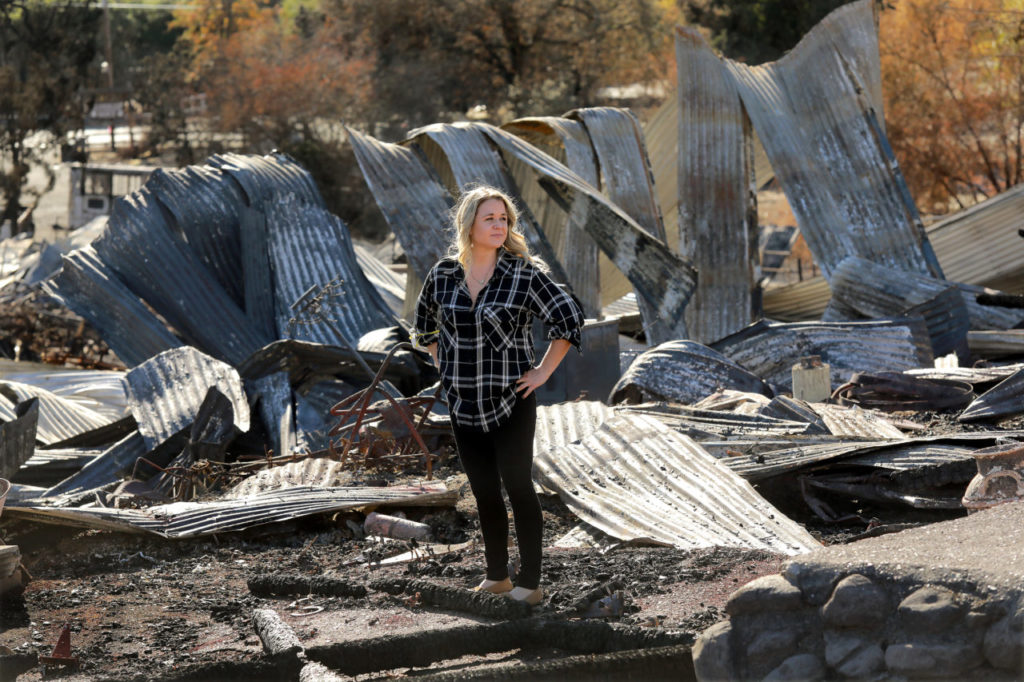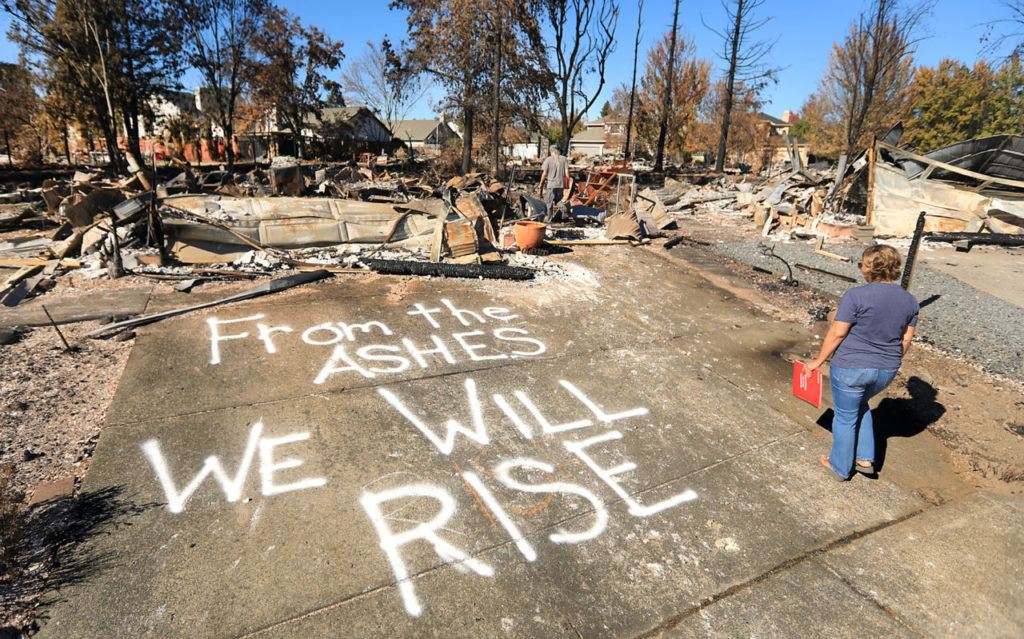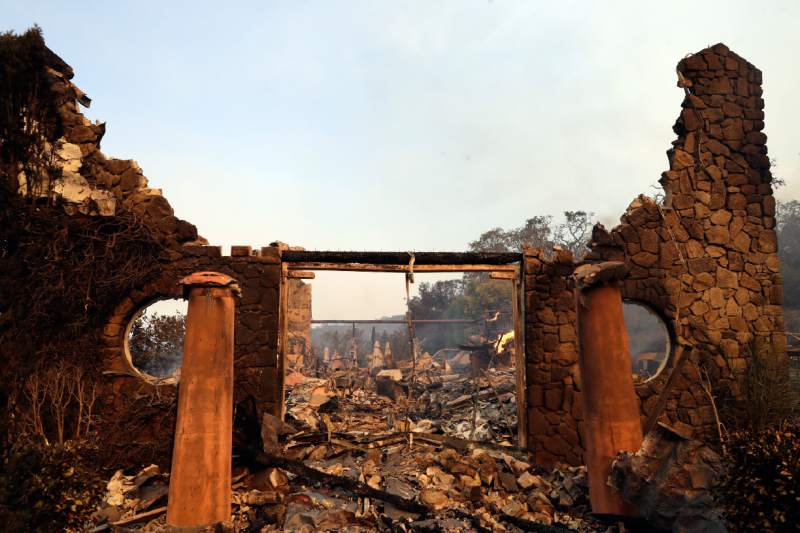Among the untold losses from the North Bay wildfires are priceless cultural and historical landmarks. Santa Rosa’s Round Barn stood prominently on a hillside at the northern approach to the city for 118 years. Paradise Ridge Winery, for nearly a generation, has been one of Santa Rosa’s most cherished gathering spots for the arts and celebrations. Bouverie Audubon Preserve in Glen Ellen is a nature sanctuary and learning center, with historical and important literary connections. And for 70 years, Cloverleaf Ranch was an idyllic summer camp for kids, a riding and boarding stable and rustic events venue — an equestrian haven a short trot north of the Santa Rosa city limits. They are all compelling symbols of our identity, our community and shared heritage.
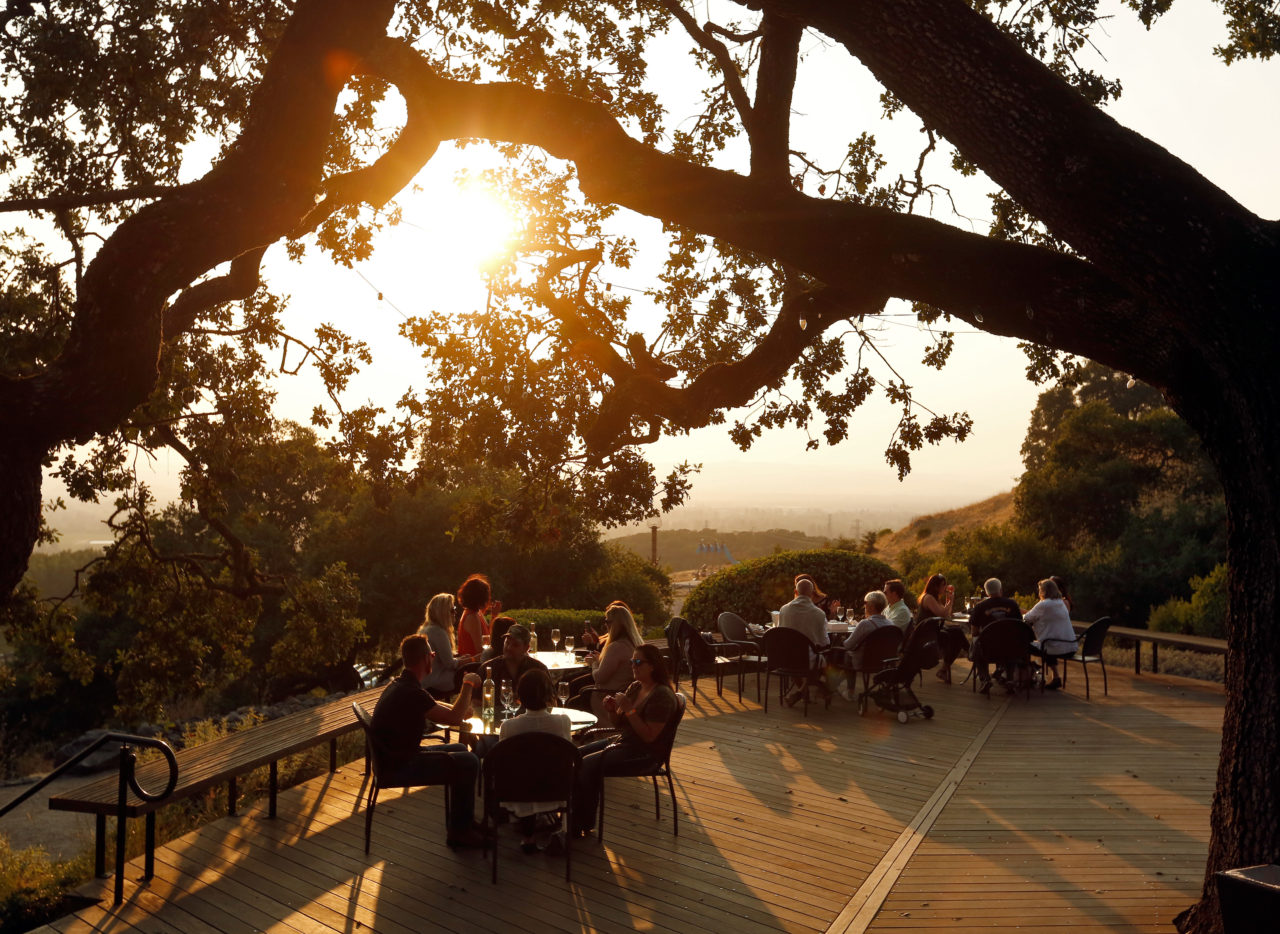
Paradise Ridge Winery, Santa Rosa
Walter Byck, who founded Paradise Ridge Winery in 1978 with his late wife, Marijke Byck, was in Denmark on October 9 when the Tubbs fire destroyed the main winery building he had set on an idyllic ridge looking over the Russian River Valley in northeast Santa Rosa.
Winery caretaker Fernando Marquez, who lives nearby, and winemaker Dan Barwick of Healdsburg both rushed to the property, but the roads were already clogged with people trying to evacuate.
“Fernando finally got to the property and opened the gates, and the firetrucks drove up and drove out,” says co-owner Sonia Byck-Barwick. “Within five minutes after that, he took a couple of pictures of the fire coming over the hill, and the front gate had flames 30 or 40 feet high.”
For Byck-Barwick, the biggest emotional loss was the exhibit housed inside the winery that honored Japanese wine pioneer Kanaye Nagasawa of the original Fountain Grove Winery.
“The sword, the Samurai outfit and his tuxedo — it’s all gone,” she says. “And it’s irreplaceable.”
But Byck, who has been a generous patron of the arts and of the community, has obviously generated good karma over the years. All the sculptures on display outdoors at the winery, including permanent works by local artists Bruce Johnson, David Best and the late Robert Ellison, as well as 10 pieces on display in Marijke’s Grove, came through virtually unscathed.
“When we walked the property, it was kind of mind-boggling,” Byck-Barwick says. “It’s amazing that we can’t see any lost art at this point.”
Miraculously, the 15 acres of vineyards planted in front of the winery also escaped the fire’s fury, which means the winery will be able to produce a vintage next year.
“The fences are burned all the way around the vineyard, but the vineyard pretty much looks perfect,” Byck-Barwick says. “That would have been an incredible loss for us.”
The winery, which was voted Best Tasting Room in California by USA Today in 2016, has also gained fame as a wedding venue, which inspired Byck to purchase a large steel sculpture of the words “LOVE” by artist Laura Kimpton of Fairfax.
Now a photograph taken by a family member of the surviving “LOVE” sculpture, surrounded by smoke, is making the rounds of social media as a powerful symbol of resilience.
“It is a beacon of hope for Sonoma County,” Byck-Barwick says. “The high schoolers all have it on their Snapchat pages.”
Communications director Barbara Harris of the Voigt Family Sculpture Foundation, which has curated the winery’s sculpture exhibits for the past five years, says that the “LOVE” sculpture is a perfect example of how art speaks a universal language.
“In the midst of tragedy and devastation and loss, it still touches people’s lives,” she says.
Sonoma Coast artist Bruce Johnson, who lost six out of 16 largescale redwood sculptures at the Luther Burbank Center for the Arts as a result of the same fire, was one of the first sculptors to exhibit at Paradise Ridge Winery more than 20 years ago.
“It’s a loss because it’s a vital, lively venue,” he says. “Walter built a performance space there, and there was a shed he used as a small gallery … and he opened up an area for several artists working in wood.”
The winery has been hosting a Wines and Sunsets event on Wednesday evenings since it opened, and Byck hopes to hold the popular music and food gathering this year at the outdoor performance venue while he rebuilds the winery. He also plans to use the wall space inside of the winery, which once told the story of Nagasawa, to tell a new story: about the fire and the rebuilding of Sonoma County.
“My dad said we’re going to use that wall for the fire because that’s the new history of Sonoma County,” Byck-Barwick says. “He wants to keep moving forward.”
– Diane Peterson
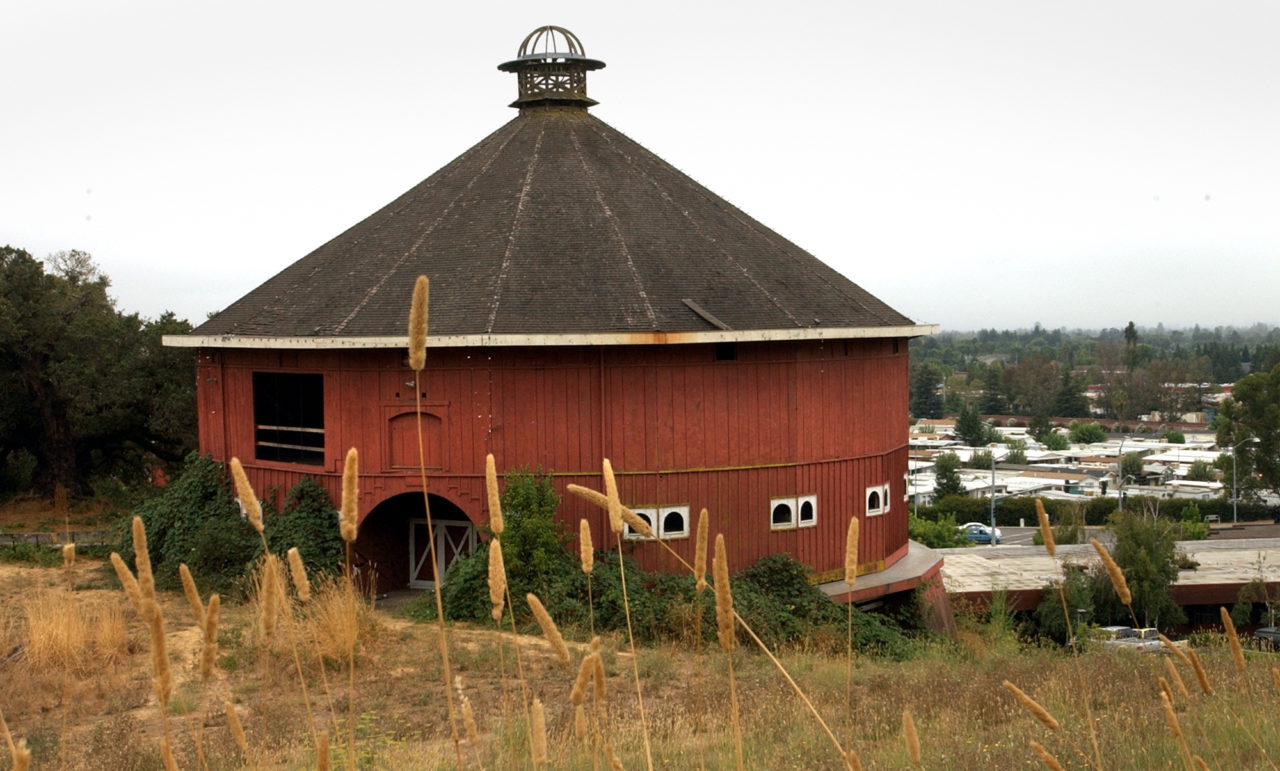
Round Barn, Santa Rosa
Kanaye Nagasawa, the exotic Japanese winemaker at Fountain Grove Winery, gets credit for “building” the familiar Round Barn that guarded the northern gateway to Santa Rosa for 118 years.
It was, in fact, Nagasawa who hired carpenter John Lindsay in 1899. But the plans he handed him came directly from Thomas Lake Harris, the founder of the Fountaingrove Utopian Community — the “Father and Pivot and Primate and King” of the Brotherhood of the New Life.
Harris had been gone from his Santa Rosa “Eden” for nearly a decade when he ordered the new barn, an example of a popular turn-of-the-century architectural style. Harris was a “student” of unique architecture, believing that he was building the Fountaingrove complex to be taken directly into the “Celestial Sphere” when the end came.
In Gay Nineties Santa Rosa, there was already a classic round barn near the railroad housing Isaac DeTurk’s valuable trotting horses. Through the years, these two buildings brought the town some architectural attention, because most of the round barns were in the Midwest and, so far as can be determined, Santa Rosa was the only town with two.
They were the subjects of good-natured banter among the townspeople, particularly those who might have gathered at the Senate Saloon to exchange witticisms. A favorite, dutifully recorded by scribes of the day, was about the tramp who walked to death looking for a corner in which to relieve himself.
The DeTurk round barn, 20 years older and built of sturdier stuff, was purchased by the city in 1910 and served as the municipal corporation yard for 70 years. It has recently been restored and is a popular venue for civic events.
No such luck for the more rough-hewn Fountaingrove barn. Since the Fountaingrove Ranch was sold in the 1970s, no cattle or horses have fed in a circle on hay tossed from the loft above into one big heap. It sat empty, except for the owls, and pigeons and an occasional transient.
TMI, a teachers’ investment group that was the first of several would-be developers of the ranch, put a bronze plaque near the entrance in memory of Nagasawa. And each new owner, in turn, tried to interest the city in buying it. But it was, let’s face it, just a barn, with single-wall construction that let the air and light and the wind and the rain in between the old boards. It was generally agreed that the public could not be allowed in unless a whole new inner structure was built. So the city said, more than once, “Thank you, but no thank you.”
Ultimately it became the property of the owners of the Hilton Hotel next door, a hostelry that was originally the “Sheraton Round Barn Inn.” But only for a few years.
What it lacked in respect, it made up for in the hearts and minds of Santa Rosans. It was a way to give directions; a unique landmark for motorists, particularly when the Redwood Highway that passed beneath it didn’t have “Old” in its name. There have been numerous attempts of “do something” with the barn, the last one, in 1999, being an abortive effort by a German couple to turn it into a brewpub.
— Gaye LeBaron
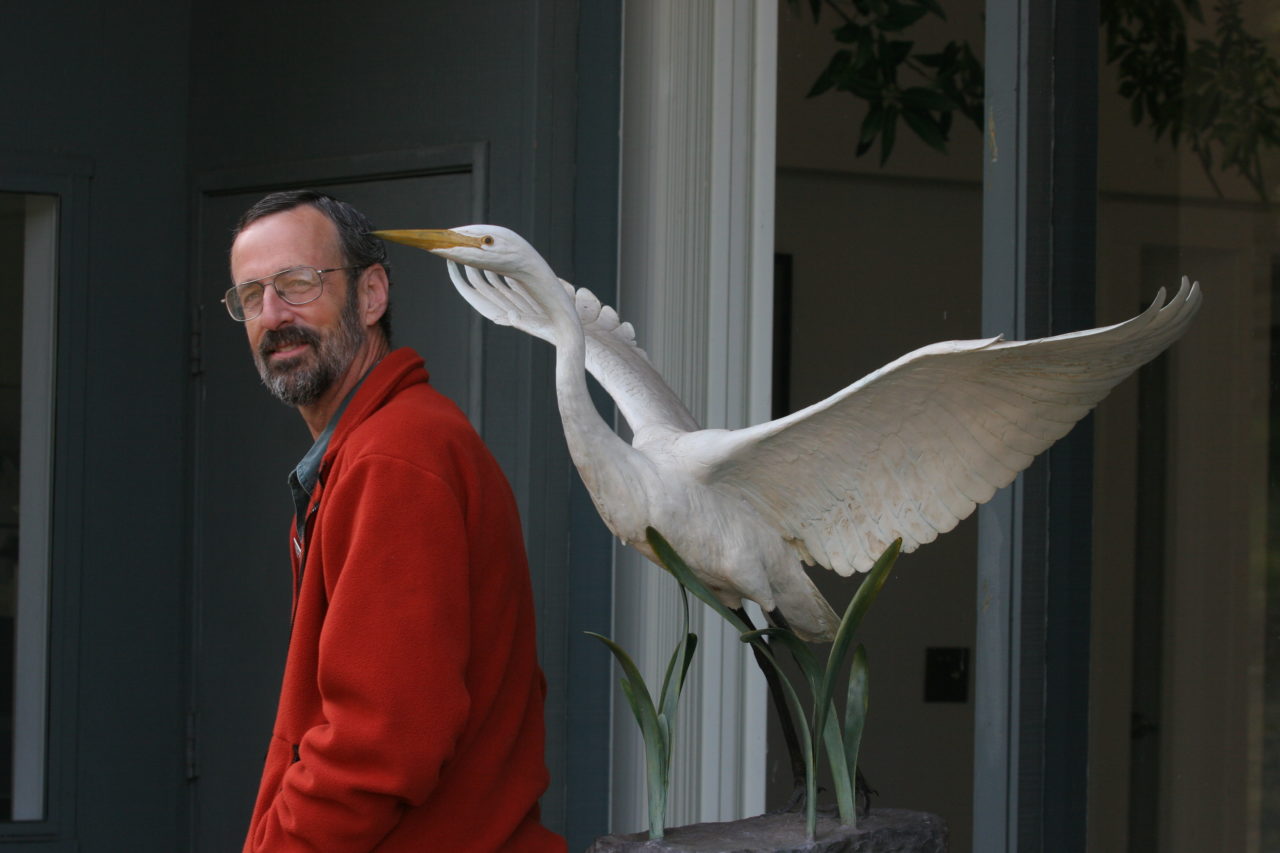
Bouverie Audubon Preserve, Glen Ellen
The Bouverie Audubon Preserve, a sanctuary for plants and wildlife set against a flank of the Mayacamas Mountains in Glen Ellen, lost every building and bit of infrastructure when the Nuns fire ripped through the upper Sonoma Valley.
It’s a profound loss for the nonprofit refuge, run by the Audubon Canyon Ranch as a preserve and educational center for schoolchildren and the community. But thanks to the unrelenting efforts of a 28-yearold employee, the historic home of founder and British-born aristocrat David Pleydell-Bouverie, filled with precious antiques, including a letter from George Washington, was spared.
And when the flames died down and the sun rose through a red haze on Monday morning, the famed “Last House” of internationally known author M.F.K. Fisher, who spent her final 21 years on the preserve, also was miraculously still standing.
“She would be so pleased it survived, not because it was her house, but
because it’s a place that can serve as a springboard for Bouverie to come back to life,” says Kennedy Golden, Fisher’s daughter. “It’s going to take time and it’s going to take money, but I’m deeply grateful David’s house and Last House survived.”
She called the forested preserve, once home to more than 130 species of birds, as well as wildflowers and large animals from bobcats to bears, “a beacon of specialness.”
Fresh from a summer spent with a “hot shot” crew out of Redding fighting wildfires, Sasha Berleman, a recently hired fire ecologist for Audubon Canyon Ranch, arrived at the preserve in the middle of the night just after the worst of the damage was done, to see what she could save.
Virtually everything was gone, including Gilman Hall, a beautiful converted barn and educational center filled with art of the flora and fauna of the preserve. Bouverie, who was an architect, designed the barn, with its distinctive end arches and swoopy roof.
Bouverie’s home was still standing but had started to burn. Aided by a retired Cal Fire training chief and a neighbor, she toiled through the night to keep the fire from taking the house, parts of which date back to the 19th century. They knocked down an arbor connecting the house to a burning guesthouse and formed a bucket brigade to douse flames with water from a swimming pool.
Anticipating potential fires, Berleman had ordered a controlled burn on the property earlier last summer, leaving little to burn and threaten Fisher’s small adobe-style home in the middle of a pasture visible from Highway 12. Berleman spent
a fitful night camping on the grounds and putting out spot fires around Fisher’s house, which contained keepsakes, like her typewriter, that had recently been returned to the cottage as part of an ongoing push to restore the house. Author of books like “The Art of Eating” and “How to Cook a Wolf,” Fisher wrote 13 books at Last House before her death in 1992.
The great poet W.H. Auden called Fisher, whose prose was as lush as the food, places and experiences that inspired her writing, “America’s greatest writer.” She broke bread with people like Maya Angelou, Julia Child and Bill Moyers at Last House, which her friend David Bouverie built for her in 1971.
Wendy Coy, a spokeswoman for the preserve, said soon after the fire that Bouverie’s staff and volunteers were both heartsick and heartened. There were signs of wildlife, everything from tiny voles to pings from tagged mountain lions on the other side of the valley. A stone belltower Bouverie had built is still standing. So is a sculpture of a great egret, with wings outstretched, that stood outside Gilman Hall.
“One of its wings is melted metal,” said Coy. “But we look at it and we immediately think, ‘That’s our phoenix.’”
— Meg McConahey
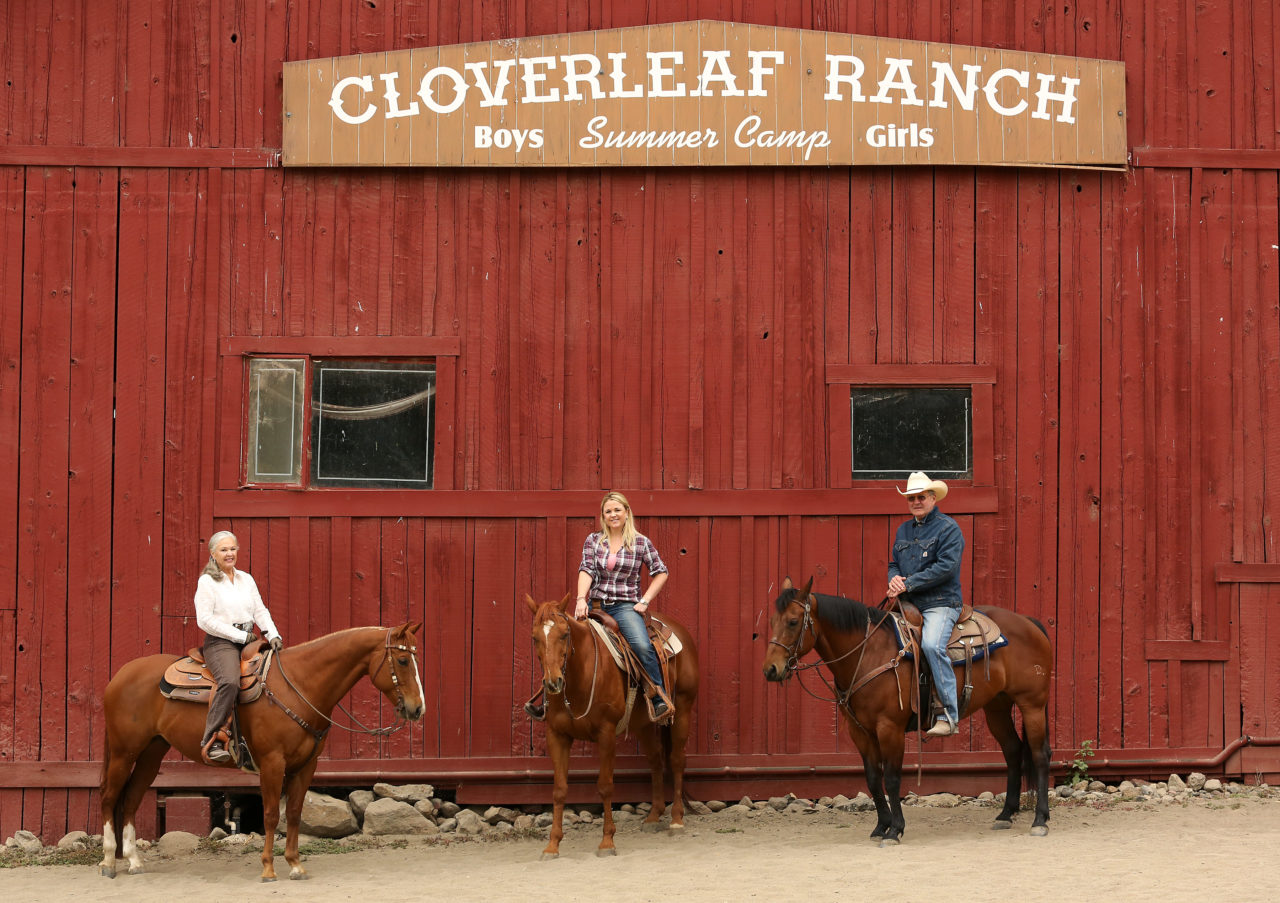
Cloverleaf Ranch, Santa Rosa
Asked where she lives, Shawna De-Grange has for years been prone to answer, “Heaven.”
DeGrange has never taken for granted the gift of having grown up and spent most of her 35 years on the 160-acre horse ranch and idyllic summer camp for kids that rises from Old Redwood Highway just north of the city limits to well up the western flank of Fountaingrove. She stands in reverent awe of Cloverleaf Ranch, founded by her late grandparents 70 years ago and passed to her by her parents in 2010. These days, she beholds as well the enormity of the task to rebuild it.
“Everything’s just melted,” De-Grange says of the ruins left by the Tubbs fire. What hurts most is the destruction of her parents’ home and the ranch’s two great Civil War-era redwood barns, and the deaths of two horses.
Just as she might direct a mount while riding, DeGrange nudges herself to stay on the bright side.
“I’m trying to take it one step at a time and be grateful,” says the 2000 graduate of the former Ursuline High School, located just up Old Redwood Highway.
DeGrange was taking a respite on Maui when the fire roared down from Fountaingrove before dawn on October 9, devouring the nearby Hilton Sonoma Wine Country hotel and the Fountaingrove Inn, then leaping west to the Coffey Park neighborhood. For a time that morning, as she spoke by phone with key Cloverleaf staffer Shayla Wilson, she feared her mother, Ginger DeGrange, had died in the fire.
But Ginger, a renowned Sonoma County equestrian who also grew up on the ranch and for more than 30 years owned and operated it with her husband, Ron, emerged almost untouched. She and Wilson and some angels with horse trailers rounded up and safely moved more than 30 family-owned and boarded horses.
Ginger, who credits Wilson with awakening and saving her and Ron, was on the ranch also for the Hanly fire of 1964, which threatened but didn’t damage Cloverleaf. She says the firestorm of October 9 was a different animal.
“It was coming so fast,” she says. “I have never seen wind like this.”
Though the flames destroyed her house, daughter Shawna’s mobile home, the barns, the camp kitchen, zip line, tack shed, trading post and several other structures and amenities, including some of the camp bunkhouses, it missed a few buildings and the classic Foley & Burke Circus wagons long ago converted to sleeping quarters.
Shawna says with a look of irony, “The (stacked-full) hay barn was left standing, which is wild.”
She and her mother have said separately the most emotional aspect of the fire has been the community response. In addition to all who helped move and board the horses, friends and strangers and former Cloverleaf Ranch campers across the nation and overseas have sent messages of love and support, and offered to help with the reconstruction.
“It’s about the village,” Ginger says. “The blessings have been just unbelievable.”
A crowdfunding appeal for help to rebuild Cloverleaf Ranch has attracted donations of more than $40,000. A second one for Shayla Wilson, who lost everything when the fire burned her unit at the ranch, has received more than $3,000.
More than 100 people have said that when the time comes to go to work creating the new Cloverleaf, they’ll be there.
As heartbreaking as it is for Shawna to walk about the remains of the ranch, being there also helps her accept the reality and extent of the loss. And already she’s pondering what she wants to build, and where.
“The more I’m here, the more it’s helping with the healing,” she says.
A doer who has run Cloverleaf since age 28, she aspires to welcome back campers, as usual, next summer.
— Chris Smith


